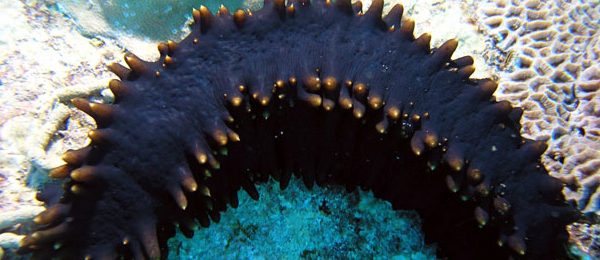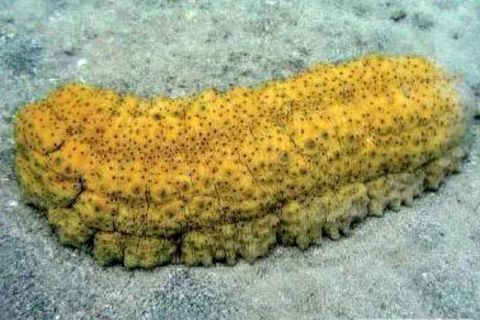
The pacific sea cucumber (Stichopus species and other members of the family Holothurioidea) has been revered by Chinese cooks since ancient times. In particular, sea cucumber meals have been offered on special occasions, especially New Year celebrations.
An ancient Confucian recipe, translated roughly as “The Eight Immortals Crossing the Sea” and made with sea cucumber, shark’s fin, and 5 kinds of fish and shellfish, is one of the classic banquet dishes. The sea cucumber is valued-along with several other delicacies, such as shark’s fin, ginseng, cordyceps, and tremella-as a disease preventive and longevity tonic. It was listed as a medicinal agent in the Bencao Congxin (New Compilation of Materia Medica) by Wu Yiluo in 1757. The popular Chinese name for sea cucumber is haishen, which means, roughly, ginseng of the sea. It is often known in medical literature as fangcishen (fang = four-sided, ci = thorny; referring to the spiky protrusions that emanate from four sides) or, in abbreviated form, fangshen.
The Asian demand for sea cucumber has been so high that these have been collected from the U.S. and other countries (e.g., Australia, Philipines) to get an adequate supply. The Atlantic sea cucumber, Cucumaria frondosa, has been collected primarily for food, but has recently been researched as a source of medicinal components, thanks to the efforts of Coastside Bio Resources in Maine, headed by Peter Collin.

SEA CUCUMBER AS A NUTRITIONAL SUPPLEMENT
From the modern medical viewpoint, sea cucumber is a valuable source of several kinds of substances that can serve as natural health products, and, perhaps, be developed as drugs. Since sea cucumber is consumed as a food by a very small segment of the population outside East Asia, most people do not have access to its beneficial components. Thus, extracts of desired sea cucumber materials are put into easy-to-consume formats, such as capsules (hard and soft gelatin) and tablets.
Sea cucumber, having a cartilagenous body, serves as a rich source of mucopolysaccharides, mainly chondroitin sulfate, which is well-known for its ability to reduce arthritis pain, especially that of osteoarthritis As little as 3 grams per day of the dried sea cucumber has been helpful in significantly reducing arthralgia. Chondroitin’s action is similar to that of glucosamine sulfate, the main building block of chondroitin.

